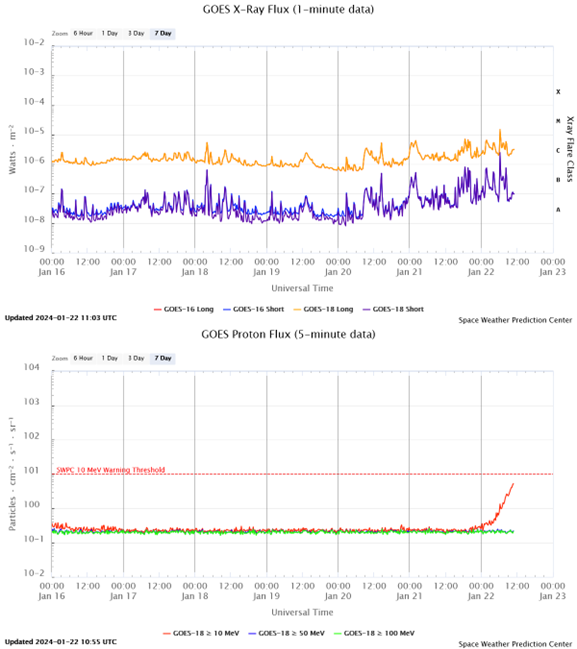Active region NOAA 3559 started to rotate over the Sun's northeast limb on 17 January as a simple bipolar region. The sunspot group started to develop from 20 January onwards, with sunspots forming in its southern and trailing (eastern) portion. The metamorphosis can be observed in the white light imagery underneath (SDO/HMI) covering the period from 19 January until early 22 January. The sunspot area of this region nearly doubled in barely 48 hours, to twice the total surface area of the Earth.

The increased activity was also observed in a steady rise of the background x-ray flux, with gradually also more and stronger flaring from NOAA 3559. Note one needs imagery in extreme ultraviolet, x-rays, or H-alpha to link each of the flaring spikes to the source region on the Sun. NOAA 3559 produced its first M-class flare early on 22 January, an M1.5 flare peaking at 06:22 UTC. The greater than 10 MeV proton flux is also gradually increasing towards event threshold of 10 pfu (particle flux units), being near 6 pfu around noon on 22 January. Its start predates the M-class flare and is most likely related to flaring activity from NOAA 3559 that happened during the second half of 21 January (or other activity...). The evolution of the GOES x-ray and the proton flux over the last 7 days can be seen in the graphs underneath, resp. the top and bottom chart. Also the 10.7 cm radio flux, as measured by Penticton (Canada), showed an important increase from 157 sfu (solar flux units) on 19 January to almost 180 sfu on 21 January.

The image underneath shows a captivating C5 flare generated by NOAA 3559 early on 21 January. It was one of the first somewhat stronger C-class flares produced by this region. The imagery were obtained by SDO/AIA 094 showing the Sun at multi-million degrees. It's virtually certain that the increasing size and complexity of NOAA 3559 will drive strong solar activity over the coming days.






